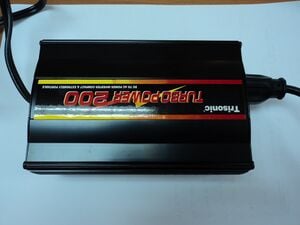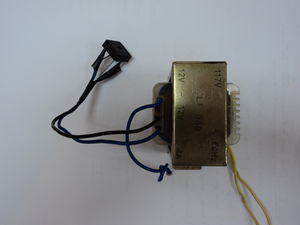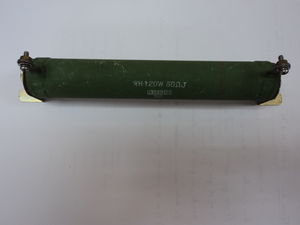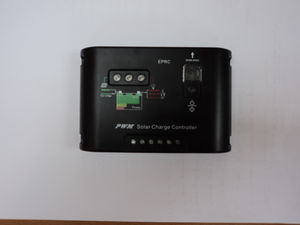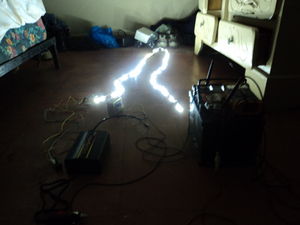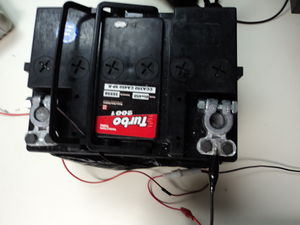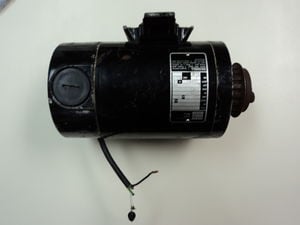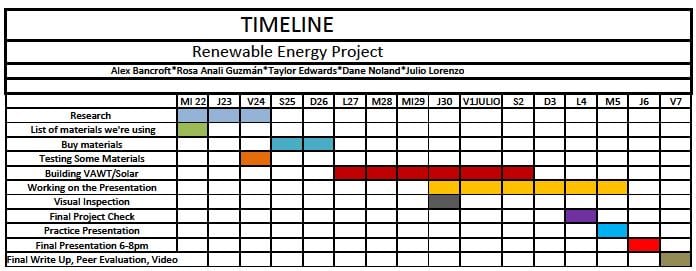Objective Statement
The objective of this Appropriate Technology project is to construct a small scale renewable energy system(s). These systems will be designed to reduce fossil fuel use, serve as educational tools, and must have an acceptable pay-back time.
Background
Criteria
Table 1: Criteria
| Criteria | Weight | Description |
|---|---|---|
| Safety | 10 | Safety is the ability of the design to prevent injury of any kind. The small scale renewable energy system must not be unsafe. |
| Effectiveness | 10 | The effectiveness of the small scale renewable energy system is the extent to which the system transfers energy, can be used as an educational tool, and the system's ability to be marketed locally. |
| Durability | 10 | Durability is the ability of the system to sustain a functioning state. |
| Aesthetics | 5 | Aesthetics is the system's level of visual appeal. |
| Payback Time | 8 | The small scale renewable energy system must have a payback time of one year or less while having an initial cost of USD $200. |
| Maintainability | 8 | Maintainability of the system is defined as the total cost required to sustain the functionality of the system. The maintenance cost is measured in money and in time. |
| Reproducibility | 8 | Reproducibility of the design is defined as the ability to which the design is able to be reproduced and marketed. |
Research
Solar
Engr 305 solar learning station
Small scale solar business in the DR
Small scale solar power in Sosua
Wind Power Generation
The Wind Turbine is the most common form of wind technology seen today. It typically has three aerodynamic blades which rotate to turn a shaft and produce electricity through a generator (or turbine). The following section summerizes some of the basic physics of wind and turbines. Also included are local climate description, local legislation of energy generation, and other miscellaneous information we found to be helpful on the project.
Further Information: Energy from the wind
Aerodynamics
A turbine in motion has two main wind forces acting upon it. The first of which is the wind (F), which blows towards the blade of the rotor. The wind blows at a 90-degree angle to the plane of rotation, which is the area swept by the rotor while the blades are rotating. As the blade continues to move, a headwind (Fu) is generated which acts directly on the plane of rotation. Once the rotor is in full motion the wind pressure (F) is split into two components. The first component (Fa) is the wind that blows at a right angle to the plane of rotation, which attempts to bend the blades of the turbine. The other wind force (Fd) points in the direction of the axis of rotation and provides the driving torque. In order to successfully generate energy, the wind force in the direction of the axis of rotation (Fd) must be greater than the headwind (Fu).
Lift
Any fluid (in this case wind) flowing past an object exerts a surface force on that object. Lift is the effect caused by the pressure difference created by the flow of the fluid over the object. When lift occurs, it is because the pressure on the underside of the object is greater than the upper side. This pressure difference causes the object to be pushed upwards or lift.
Drag
Just like lift, drag is created by the flow of a fluid over an object. Drag is a force that opposes the motion of the object. Drag also acts perpendicular to lift. Drag can be considered to be aerodynamic friction. As the fluid flows around the object, the fluid experiences frictional forces. These frictional forces cause a change in velocity, where the velocity of the fluid flowing over the object is greater than the velocity of the fluid behind the object. This difference in velocity causes a pressure difference between the front and back of the object. When the pressure is greater in the front of the object the object experiences a force that pushes the object backwards.
Important Notes on Aerodynamics and Turbines
- The wind flow around a turbine is completely dominated by the head wind created by axis of rotation of the blade and rotor.
- The streamlined design of the turbine blades creates a greater pressure difference in the back of the blade, creating a lift force and pushes the blade forward. Moreover, the lift effect causes the blade to move in the intended direction.
- By increasing or decreasing the blade width as well as the twist of the blade will greatly affect the streamline as well as the structural strength of the blade. Often times one will need to find a compromise on size and shape of the blade in order to insure structural integrity of the turbine.
Wind Turbine Axis
Further Information: Small Scale Renewable Wind Energy
When designing a wind power generator, one should examine the location before determining the type of turbine to use. Depending on wind direction and frequency, one may find that their design would be best suited with either a horizontal or vertical axis turbine as shown in Figure 1. Horizontal Axis types are the most common because they are proven to work efficiently and are fairly easy to assemble. VAWTs, on the other hand, have the advantage of being able to use wind from every direction, and they fit in urban environments better.
-
Figure 1a: Diagram of a VAWT
-
Figure 1b: Diagram of a HAWT
Horizontal Axis Wind Turbine (HAWT)
A HAWT is a wind turbine that is usually composed of two or three blades, which rotate around a horizontally situated shaft. HAWTs must be facing directly into the wind in order to work. Since the wind direction changes throughout the day a mechanism must be installed to allow the turbine to rotate and face the wind.
Vertical Axis Wind Turbine (VAWT)
VAWTs consist of a vertically situated shaft and at least 2 blades. Unlike HAWTs, they do not need to be facing directly towards the wind. VAWTs are also often installed at a lower elevation, which makes it easier for maintenance.
Micro Climate Santo Domingo[1]
Insolation: The sunshine of Santo Domingo receives an average of 215 hours of sunshine per month, with 62% of possible daylight hours, providing approximately 450 Cal / day on average per year.
Cloudiness: The cloudiness is presented in an annual average of 5 / 8 coverage above average during the months of May, August and October and coincides with the rainy season.
Winds: The city of Santo Domingo is located in the path of winds from the northwest, whose address is to small changes in the topography of the valley of Santo Domingo and the city buildings. Near the coast, the address is altered by the temperature differential between land and water masses, which makes the winds flow from sea to land during the day (SE) and from land to sea during the night (NE). The annual average wind speed in Santo Domingo is 10.7 km / h. The maximum speed is given in the afternoon.
Wind Study in Santo Domingo
- http://es.windfinder.com/windstats/windstatistic_santo_domingo.htm
- http://es.windfinder.com/wind-cgi/forecast_print.pl?STATIONSNR=santo_domingo
- http://es.windfinder.com/report/santo_domingo
- http://www.wunderground.com/swf/Rapid_Fire.swf?units=metric&station=IDISTRIT4
Other
- Incentive Law No. 57-07 on the Development of Renewable Energy Sources and its Special Dietary Uses. 75% exempt from income tax.
http://www.drlawyer.com/es/publicaciones/ley-incentivo-energia-renovables.html
- Usage and studies about wind power in Dominican Republic
- Basic about small scale renewable energy- Wind Power Dominican Republic Source
Do I have enough wind in my location? The amount of wind in a location is critical in determining the amount of energy that the turbine will produce. In general, the high places and coastal areas tend to be places for the frequent winds. But if there is enough wind can cause a lot of energy. For example, a 10 kW turbine in a place where the average wind speed is 4.47 m / s will produce 7,700 kWh per year. The same turbine produces about 12,500 kWh per year in the same place with a speed of 5.36 m / s. Minimum for a viable wind project must have average winds of 4 m / s, although it is preferred to be of 5.36 m / s or more.
What is the best place for a wind turbine? On a same property should also be used on what are the most conducive to place a wind turbine. Predominant directions should be studied and above all choose high ground. In the summits have access to all prevailing winds. It is important to consider the obstacles that are in the vicinity and future obstacles. With regard to the distances to be considered that the ideal is that no major obstacles in a radius of 100 m and the turbine should be placed about 10 m above the ground.
How much does a wind system cost? Costs vary and is a technology that is becoming more affordable. However, consider that the costs per kW of small wind turbines can range from $ 1,500 to $ 6,000. The costs of installing and permissions can add another 25% or more of the purchase price. The operation and maintenance costs can be between 1-3% of the cost of initial installation. http://todoproductividad.blogspot.com/2009/09/lo-basico-sobre-la-energia-eolica.html
The Design
Electronics
Cost
Budget
| Materials | Unit Price (Pesos) | Quantity | Cost (Pesos) | Cost (USD) |
|---|---|---|---|---|
| Transformer and Rectifier | $760 | 1 | $760 | $21.57 |
| Gears | $410 | 1 | $410 | $11.08 |
| Permanent Magnet Motor and Shunt | $1500 | 1 | $1500 | $40.54 |
| Battery and Terminals | $1870 | 1 | $1870 | $50.54 |
| Diodes, Switches, and Zeners | $50 | 1 | $50 | $1.35 |
| Inverter | $1400 | 1 | $1400 | $37.84 |
| Solar Charge Controler | $1300 | 1 | $1300 | $35.14 |
| LED | $55.50 (Donated) | 27 LED's | $1498.5 | $40.5 |
| Electrical wire | $5/ft (donated) | 300ft | $1500 | $40.54 |
| Turbine (Construction) | $20000 | 1 | $20000 | $540.54 |
| Black Metal Pipe | $635 | 1 | $635 | 17.16 |
| Angular Iron | $2435.47 | 1 | $2435.47 | $65.82 |
| Theoretical Cost = | $32949.97 | $890.54 | ||
| Our Cost = | $9951.47 | $268.96 |
Car Alternator Information
Wind Turbine Generation System Implemented with a Car Alternator for Use in Isolated Locations
NREL study on wind as a resource in the Dominican Republic
Timeline
References
- ↑ Citation added: Arqto. Domingo Gaton Reyes. "El Microclima" Web. 13 June 2011. http://www.arqhys.com/contenidos/microclima.html>.


